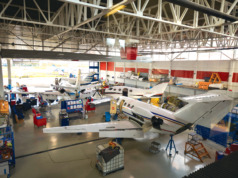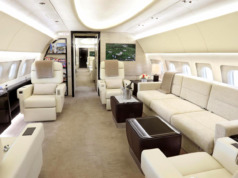
Once your aircraft is 30 or so years old, or has high total flight time, it may already have had its third paint and interior refurb, and two or more engine overhauls. Although no longer a showpiece, it serves your mission well, and you expect it will hold its value when it comes time to upgrade. But aircraft that used to sell at 30 — or even 40 — years old now are being retired. What has changed? Will you be your aircraft’s last owner?
Until a decade ago, many Original Equipment Manufacturers (OEMs) authorized independent maintenance/repair/overhaul (MRO) facilities to work on their airframes and engines. These shops had access to an abundance of spare parts and exchange units. Owners easily could shop large work packages and parts competitively. With new models selling at record levels, the OEMs’ primary mission to build, sell, and deliver new airframes and engines left much of the maintenance support on older aircraft to those independent shops. Competition kept the operating cost low for an aircraft’s third, fourth, and even fifth owner, enabling some aircraft to continue in service for up to 40 years.
But during the 2008 market downturn, new aircraft worth $30,000,000+ plunged as much as 30% in value. Many owners who’d planned to sell their aircraft were surprised to find no buyers. Those less fortunate found themselves the next-to-last owner, just before the bank called in the loan.
Because the market has not fully recovered, even some newer models with relatively moderate or low time are being parked and sold for parts. What caused this shift?
- New technology – “Next generation” aircraft, produced since 2000, were delivered with significantly advanced technology, such as on-board monitoring systems, computer-controlled engines, and advanced avionics suites. These require special training, advanced tooling, and OEM engineering support — a costly commitment.
- Cost for an independent shop to become OEM-approved – Blanket OEM approvals and authorizations for entire OEM engine or airframe product lines no longer are sold to independent repair facilities as before. Now, they may be sold separately to MRO facilities for as much as what a full-line authorization previously cost, leaving fewer MRO facilities from which to shop competitively.
- The OEMs’ desire to retain more revenue in-house. When aircraft are new and under warranty, the first two owners usually return to the OEM facilities for maintenance or repair. OEMs today seek to retain these aircraft as in-house service customers as long as possible, and build this revenue stream to supplement lower new aircraft sales. They focus on retaining parts and maintenance services for older aircraft and recent models, rather than have them move to third-party maintenance providers. Some OEMs no longer sell licensing agreements, in order to drive work and revenue to company-owned facilities.
- New, more stringent restrictions by lenders, which eliminate groups of potential owners (See: “The Changing Lending Climate,” BAA September/October 2014).
These factors are more likely to apply to aircraft more than 20 years old with at least two, and often three, major maintenance items due. For example;
- Airframe is due for a major 20-year check, with some life-limited components due for overhaul or change: cost totaling 20%+ of the aircraft value.
- Engines due for a major shop visit (e.g. hot section or overhaul): cost approaching 40% of the aircraft value.
- Avionics upgrades required to comply with changes to FAA or EASA operating regulations: cost 10%+ of the aircraft’s value.
If you’ve recently purchased an older aircraft, planning to fly it for several years, depreciate, and then sell and upgrade, you may find that the aircraft no longer holds its value. For many makes and models, changing markets and technology, combined with limited MRO competition, could make you — today’s owner — the last owner. BAA
George Kleros, Senior VP, Advisory Services for Jet Support Services, Inc. (JSSI), has more than 30 years of experience in Aviation Maintenance, Management, and Field Support Services for business jet aircraft.





